-
 Bitcoin
Bitcoin $76,896.9922
-2.49% -
 Ethereum
Ethereum $1,473.1976
-5.32% -
 Tether USDt
Tether USDt $0.9992
-0.04% -
 XRP
XRP $1.8146
-4.69% -
 BNB
BNB $556.9810
0.12% -
 USDC
USDC $1.0001
0.01% -
 Solana
Solana $105.9952
-0.80% -
 TRON
TRON $0.2308
1.15% -
 Dogecoin
Dogecoin $0.1431
-3.57% -
 Cardano
Cardano $0.5615
-3.59% -
 UNUS SED LEO
UNUS SED LEO $9.0012
0.69% -
 Toncoin
Toncoin $3.0061
-2.13% -
 Chainlink
Chainlink $10.9621
-4.38% -
 Stellar
Stellar $0.2234
-3.67% -
 Avalanche
Avalanche $16.1069
-3.34% -
 Sui
Sui $1.9654
-3.26% -
 Hedera
Hedera $0.1496
-0.15% -
 Shiba Inu
Shiba Inu $0.0...01063
-6.43% -
 MANTRA
MANTRA $6.1910
-1.06% -
 Bitcoin Cash
Bitcoin Cash $271.2156
-1.79% -
 Dai
Dai $1.0001
0.01% -
 Polkadot
Polkadot $3.4118
-5.14% -
 Litecoin
Litecoin $69.6171
-2.88% -
 Ethena USDe
Ethena USDe $0.9987
-0.01% -
 Bitget Token
Bitget Token $4.0464
-0.85% -
 Pi
Pi $0.5710
-4.11% -
 Hyperliquid
Hyperliquid $11.2530
-2.59% -
 Monero
Monero $200.1748
-0.71% -
 OKB
OKB $51.2190
0.06% -
 Uniswap
Uniswap $4.7961
-6.30%
What does Rug Pull mean? How to identify scam projects?
A rug pull is a crypto scam where developers abandon a project, taking investors' money; watch for anonymity, unrealistic promises, and lack of transparency to avoid falling victim.
Apr 05, 2025 at 01:00 pm

What is a Rug Pull?
A Rug Pull is a type of scam in the cryptocurrency world where developers or creators of a project suddenly abandon it and run away with investors' money. This term is derived from the idea of pulling the rug out from under someone, leaving them to fall. In the context of cryptocurrencies, a rug pull typically involves the following steps:
- Developers create a new cryptocurrency or token and promote it heavily to attract investors.
- Once a significant amount of money is invested, the developers suddenly remove liquidity from the project, making the token's value plummet.
- The developers then disappear with the funds, leaving investors with worthless tokens.
Rug pulls are particularly common in the decentralized finance (DeFi) space, where new projects can be launched quickly and with minimal oversight.
How to Identify Scam Projects
Identifying scam projects, including those that might lead to a rug pull, is crucial for protecting your investments. Here are some key indicators to watch out for:
Lack of Transparency
Transparency is vital in the crypto world. Projects that lack clear information about their team, roadmap, and smart contract audits are red flags. Look for the following:
- Anonymous Team: If the team behind the project is anonymous or uses pseudonyms without any verifiable credentials, it's a warning sign.
- No Smart Contract Audit: Legitimate projects often have their smart contracts audited by reputable firms. The absence of such audits can indicate a higher risk of scams.
- Vague Roadmap: A project with a vague or non-existent roadmap may be trying to hide its true intentions.
Unrealistic Promises
Unrealistic promises are a common tactic used by scammers to lure investors. Be wary of projects that promise:
- High Returns with Low Risk: If it sounds too good to be true, it probably is. High returns usually come with high risks.
- Guaranteed Profits: No investment can guarantee profits, especially in the volatile crypto market.
- Quick Riches: Projects that promise quick riches are often designed to attract greedy investors who are more likely to fall for scams.
Suspicious Tokenomics
Tokenomics, or the economic model of a token, can reveal a lot about a project's intentions. Watch out for:
- High Token Allocation to Team: If a large percentage of tokens is allocated to the team with no vesting period, it's a sign that the team might dump their tokens and run.
- Lack of Liquidity: Projects that have low liquidity or no clear plan for liquidity provision are risky. Liquidity is essential for the token's value to remain stable.
- Unclear Token Utility: If the token's utility is unclear or non-existent, it might be a scam designed to pump and dump.
Community and Social Media Presence
Community and social media presence can provide insights into a project's legitimacy. Consider the following:
- Fake Hype: Projects that rely heavily on paid promotions and fake social media accounts to create hype are often scams.
- Lack of Engagement: Legitimate projects usually have an active community that engages with the team and discusses the project's progress. A lack of engagement can indicate a lack of genuine interest.
- Negative Feedback: Pay attention to negative feedback and warnings from other investors. If many people are reporting issues with the project, it's a sign to stay away.
Red Flags in the Whitepaper
The whitepaper is a crucial document that outlines a project's goals, technology, and roadmap. Look for the following red flags:
- Plagiarized Content: If the whitepaper contains plagiarized content from other projects, it's a clear sign of a scam.
- Technical Jargon without Explanation: A whitepaper that uses complex technical jargon without explaining it may be trying to confuse readers and hide its true intentions.
- Lack of Detail: A whitepaper that lacks detail about the project's technology, team, and roadmap is a warning sign.
How to Protect Yourself from Rug Pulls
Protecting yourself from rug pulls and other scams requires diligence and caution. Here are some steps you can take:
Research Thoroughly
Thorough research is the first line of defense against scams. Before investing in any project, take the time to:
- Read the Whitepaper: Understand the project's goals, technology, and roadmap.
- Check the Team: Verify the team's credentials and look for any red flags.
- Review Smart Contract Audits: Ensure the project's smart contracts have been audited by reputable firms.
- Analyze Tokenomics: Understand the token's economic model and how it benefits investors.
Use Reputable Platforms
Reputable platforms can help you avoid scams. Stick to well-known exchanges and decentralized finance (DeFi) platforms that have a track record of security and reliability. Some reputable platforms include:
- Binance: A leading centralized exchange with a strong focus on security.
- Uniswap: A popular decentralized exchange with a large user base and robust security measures.
- Coinbase: A trusted platform for buying, selling, and storing cryptocurrencies.
Diversify Your Investments
Diversifying your investments can help mitigate the risk of falling victim to a rug pull. Instead of putting all your money into one project, spread your investments across multiple assets. This way, if one project turns out to be a scam, you won't lose everything.
Stay Informed
Staying informed about the latest developments in the crypto world can help you spot potential scams. Follow reputable crypto news sources and join communities where you can discuss projects with other investors. Some reliable sources include:
- CoinDesk: A leading source of crypto news and analysis.
- Crypto Twitter: A vibrant community where you can find insights and warnings about potential scams.
- Reddit: Various subreddits dedicated to cryptocurrency where you can engage with other investors.
Frequently Asked Questions
Q: Can rug pulls happen on established platforms like Ethereum?
A: Yes, rug pulls can happen on any platform, including established ones like Ethereum. While Ethereum has robust security measures, the decentralized nature of the platform means that anyone can launch a new token or project, which can be used for scams.
Q: Are all anonymous projects scams?
A: Not all anonymous projects are scams, but anonymity can be a red flag. Some legitimate projects may choose to remain anonymous for privacy reasons, but it's important to do thorough research and look for other signs of legitimacy before investing.
Q: How can I recover my funds if I fall victim to a rug pull?
A: Recovering funds from a rug pull is extremely difficult and often impossible. The best course of action is to report the scam to the relevant authorities and warn other investors. In some cases, if the scam is large enough, law enforcement may be able to take action, but this is rare.
Q: Are there any tools that can help me detect rug pulls?
A: Yes, there are several tools and resources available to help detect rug pulls. Some popular ones include:
- Etherscan: A blockchain explorer that allows you to check the smart contract's code and transaction history.
- Dune Analytics: A platform that provides data and analytics on various crypto projects, helping you spot suspicious activity.
- RugDoc: A community-driven project that reviews and rates DeFi projects for potential risks.
Disclaimer:info@kdj.com
The information provided is not trading advice. kdj.com does not assume any responsibility for any investments made based on the information provided in this article. Cryptocurrencies are highly volatile and it is highly recommended that you invest with caution after thorough research!
If you believe that the content used on this website infringes your copyright, please contact us immediately (info@kdj.com) and we will delete it promptly.
- What Does the Proposal Entail?
- 2025-04-09 04:50:12
- Leveraging the Power of Presale Allocation
- 2025-04-09 04:50:12
- XRP Could Surge to $12.5 and Overtake Ethereum
- 2025-04-09 04:45:13
- Introducing Decentralized AI Agents to the Polygon Ecosystem
- 2025-04-09 04:45:13
- Bitcoin traders have been holding their breath in recent weeks, anticipating further clarity on US President Donald Trump's approach to digital assets.
- 2025-04-09 04:40:12
- Advancing Decentralized Payments and NFTs
- 2025-04-09 04:40:12
Related knowledge
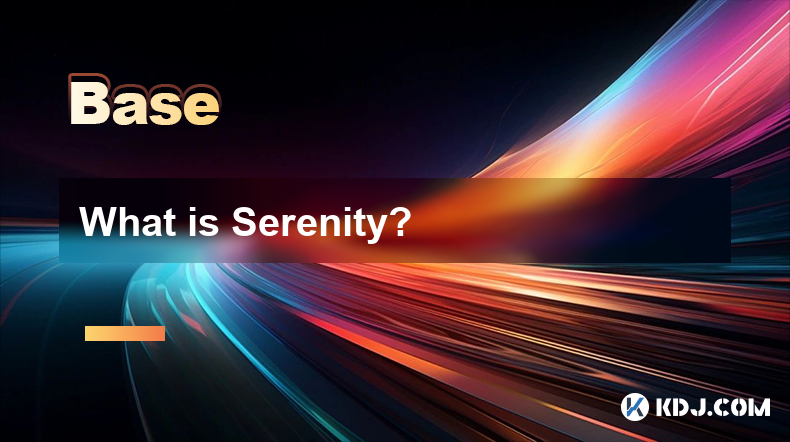
What is Serenity?
Apr 08,2025 at 02:00pm
Serenity, also known as Ethereum 2.0, represents a major upgrade to the Ethereum blockchain. This ambitious project aims to address the scalability, security, and sustainability issues faced by the current Ethereum network. Serenity is not a single update but a series of upgrades that will transform Ethereum into a more efficient and robust platform. Th...
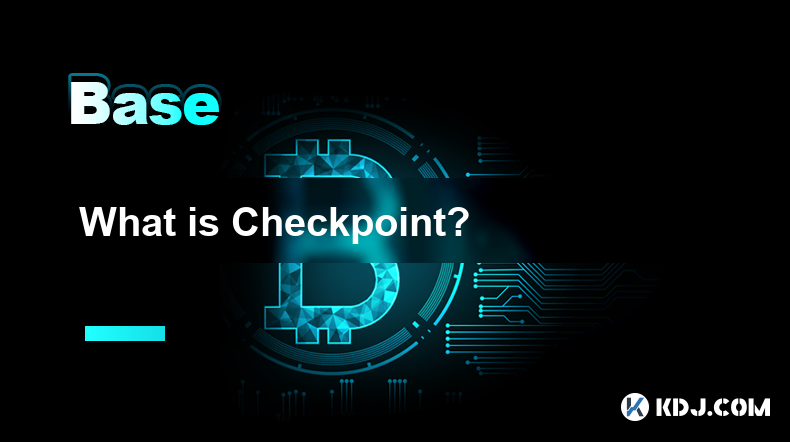
What is Checkpoint?
Apr 08,2025 at 05:08pm
A checkpoint in the context of blockchain and cryptocurrencies is a mechanism used to enhance the security and efficiency of a blockchain network. It serves as a snapshot of the blockchain at a specific point in time, which can be used to validate the integrity of the chain and prevent certain types of attacks. Checkpoints are particularly important in ...

What is Finality Gadget?
Apr 08,2025 at 04:14am
The Finality Gadget is a crucial component in the architecture of certain blockchain networks, particularly those that utilize a hybrid consensus mechanism. It plays a pivotal role in ensuring the finality of transactions, which means that once a transaction is confirmed, it cannot be altered or reversed. This article delves into the intricacies of the ...
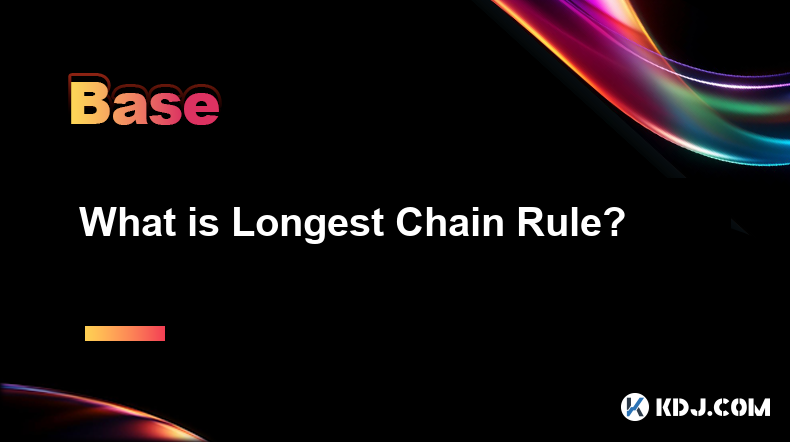
What is Longest Chain Rule?
Apr 08,2025 at 07:50am
The Longest Chain Rule is a fundamental concept in blockchain technology, particularly in the context of cryptocurrencies like Bitcoin. This rule is crucial for maintaining the integrity and security of the blockchain network. In essence, the Longest Chain Rule dictates that the valid blockchain is the one with the most cumulative proof-of-work, which i...
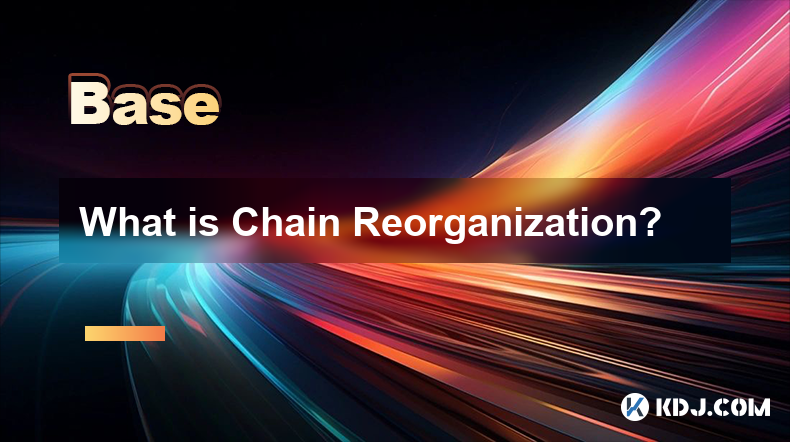
What is Chain Reorganization?
Apr 08,2025 at 03:08pm
What is Chain Reorganization? Chain reorganization, often referred to as a 'reorg,' is a fundamental concept in blockchain technology that can significantly impact the integrity and operation of a blockchain network. Chain reorganization occurs when a blockchain network replaces a previously accepted block or series of blocks with a new set of blocks, l...
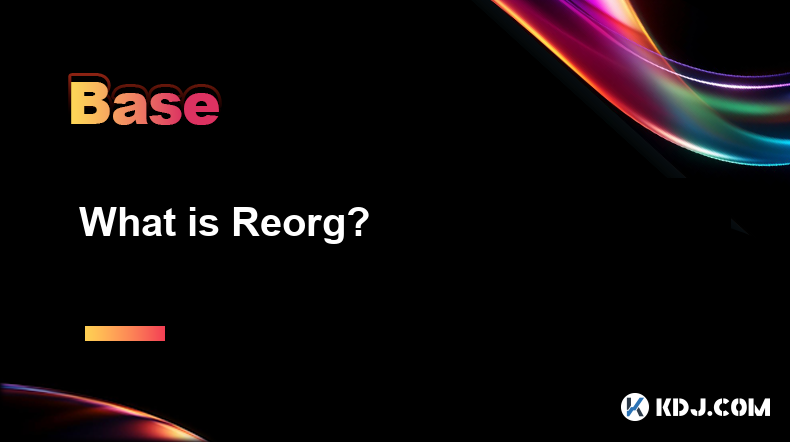
What is Reorg?
Apr 08,2025 at 11:08pm
What is Reorg?In the world of cryptocurrencies, particularly those that operate on blockchain technology, the term Reorg or Blockchain Reorganization is a critical concept that users and developers need to understand. A reorg refers to a situation where the blockchain undergoes a reorganization of its blocks, which can lead to changes in the accepted ve...

What is Serenity?
Apr 08,2025 at 02:00pm
Serenity, also known as Ethereum 2.0, represents a major upgrade to the Ethereum blockchain. This ambitious project aims to address the scalability, security, and sustainability issues faced by the current Ethereum network. Serenity is not a single update but a series of upgrades that will transform Ethereum into a more efficient and robust platform. Th...

What is Checkpoint?
Apr 08,2025 at 05:08pm
A checkpoint in the context of blockchain and cryptocurrencies is a mechanism used to enhance the security and efficiency of a blockchain network. It serves as a snapshot of the blockchain at a specific point in time, which can be used to validate the integrity of the chain and prevent certain types of attacks. Checkpoints are particularly important in ...

What is Finality Gadget?
Apr 08,2025 at 04:14am
The Finality Gadget is a crucial component in the architecture of certain blockchain networks, particularly those that utilize a hybrid consensus mechanism. It plays a pivotal role in ensuring the finality of transactions, which means that once a transaction is confirmed, it cannot be altered or reversed. This article delves into the intricacies of the ...

What is Longest Chain Rule?
Apr 08,2025 at 07:50am
The Longest Chain Rule is a fundamental concept in blockchain technology, particularly in the context of cryptocurrencies like Bitcoin. This rule is crucial for maintaining the integrity and security of the blockchain network. In essence, the Longest Chain Rule dictates that the valid blockchain is the one with the most cumulative proof-of-work, which i...

What is Chain Reorganization?
Apr 08,2025 at 03:08pm
What is Chain Reorganization? Chain reorganization, often referred to as a 'reorg,' is a fundamental concept in blockchain technology that can significantly impact the integrity and operation of a blockchain network. Chain reorganization occurs when a blockchain network replaces a previously accepted block or series of blocks with a new set of blocks, l...

What is Reorg?
Apr 08,2025 at 11:08pm
What is Reorg?In the world of cryptocurrencies, particularly those that operate on blockchain technology, the term Reorg or Blockchain Reorganization is a critical concept that users and developers need to understand. A reorg refers to a situation where the blockchain undergoes a reorganization of its blocks, which can lead to changes in the accepted ve...
See all articles






















































































